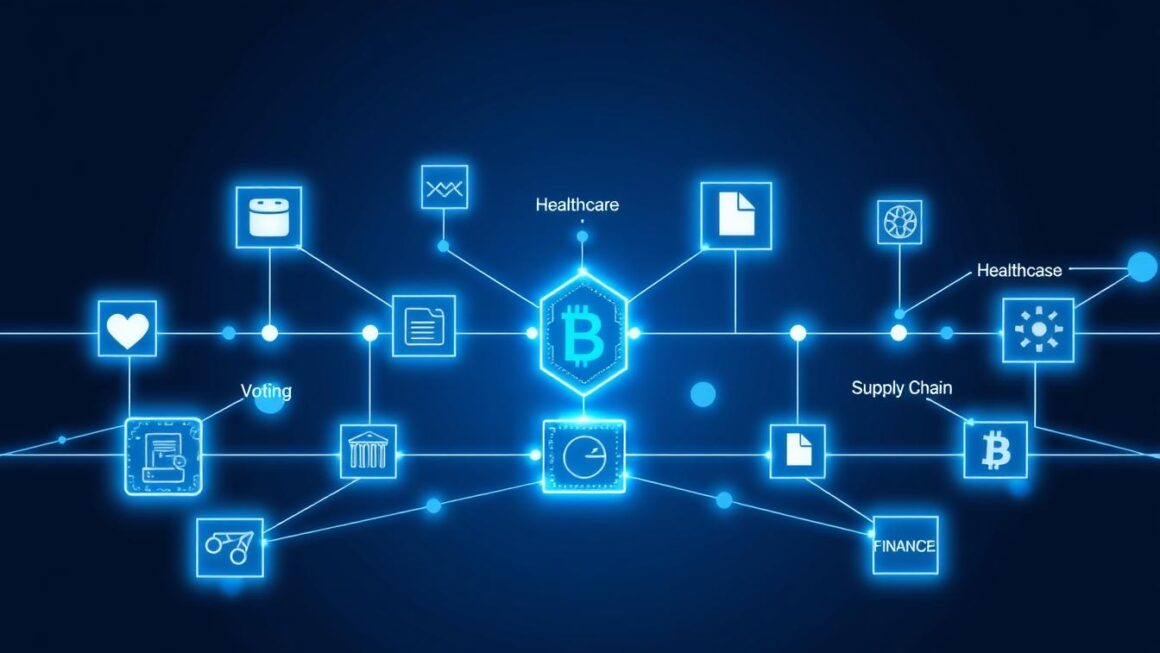Did you know that 97% of developers using GitHub Copilot report increased efficiency? This surprising statistic highlights the growing role of advanced tools in software development. But does this mean these tools are here to replace human creativity and expertise? Not quite.
Tools like GitHub Copilot and Amazon CodeWhisperer have become industry standards, helping professionals streamline their workflows. However, the real value lies in collaboration. These tools enhance productivity by handling repetitive tasks, allowing developers to focus on complex problem-solving and innovation.
While some worry about the impact on code quality and skill retention, the evidence suggests a different story. These tools are designed to assist, not replace. They empower developers to work smarter, not harder. The future of software development is about human creativity working hand-in-hand with advanced technology.
Key Takeaways
- 97% of GitHub Copilot users report increased efficiency.
- Tools like GitHub Copilot and Amazon CodeWhisperer are industry standards.
- Advanced tools handle repetitive tasks, freeing up time for complex problem-solving.
- Collaboration between humans and technology is the future of software development.
- These tools enhance productivity without replacing human creativity.
Introduction: The Rise of AI Coding Assistants
From simple autocomplete to complex code generation, the evolution is undeniable. These tools have come a long way since their early days, transforming how developers approach their work. What started as basic text generation with GPT-3 has now evolved into sophisticated solutions capable of solving intricate coding problems.
Today, 63% of Fortune 500 companies rely on these advanced tools to streamline their software development processes. This widespread adoption reflects a significant shift in sentiment. What was once met with skepticism is now embraced as a valuable asset for saving time and enhancing efficiency.
According to Stanford’s AI Index 2025, these tools now solve 71.7% of coding problems, a stark contrast to the 4.4% rate in 2023. This leap in capability is further highlighted by Claude Sonnet 3.7’s 35.8% score on BigCodeBench’s hard set, showcasing their growing sophistication.
Developers are no longer just users; they are collaborators. These tools empower them to focus on creativity and innovation while handling repetitive tasks. The future of software development is here, and it’s about working smarter, not harder.
What Are AI Coding Assistants?
The way we write code has changed dramatically in recent years. Advanced tools powered by machine learning are now essential for modern programming. These solutions help developers work faster and smarter, transforming how we approach software development.
Defining AI-Powered Code Tools
At their core, these tools rely on large language models (LLMs) built on transformer architecture. This technology enables them to understand and generate code in multiple programming languages. They can handle tasks like autocomplete, error detection, and even documentation generation in real time.
One standout example is Claude Sonnet 3.7, which boasts a 200k token context window. This allows it to process extensive amounts of code seamlessly. Additionally, Anthropic’s Model Context Protocol (MCP) ensures smooth integration with other tools, making workflows more efficient.
How They Work
These tools analyze patterns in existing code to provide suggestions and corrections. They use machine learning to improve their accuracy over time. Whether it’s fixing syntax errors or generating boilerplate code, they save developers countless hours.
- Autocomplete: Predicts the next lines of code based on context.
- Error Detection: Identifies and suggests fixes for bugs in real time.
- Documentation Generation: Automatically creates comments and explanations for code.
There’s also a growing trend called “vibe coding,” where developers balance speed with security. While these tools accelerate workflows, it’s crucial to review their suggestions to avoid potential risks.
Finally, the choice between cloud-based and local models depends on specific needs. For example, Tabnine offers a privacy-focused approach, ensuring sensitive code remains secure. These options make advanced tools accessible to all developers, regardless of their environment.
How AI Coding Assistants Boost Developer Productivity
Efficiency in software development has reached new heights with advanced solutions. These tools are designed to handle repetitive tasks, freeing up time for developers to focus on creativity and innovation. Let’s explore how they achieve this.
Faster Task Completion
One of the most significant benefits is speed. GitHub reports that developers complete tasks 55% faster when using their tool. This is achieved through features like autocomplete and real-time error detection. For example, VS Code’s Copilot panel provides instant suggestions, reducing the need for manual coding.
On average, developers save 3.2 hours per week on boilerplate coding. This time can be redirected toward more complex functions, such as system architecture or debugging. Tools like JetBrains’ AI assistant further streamline workflows by integrating seamlessly into IDEs.
Focus on Logic and Architecture
By automating repetitive processes, these tools allow developers to concentrate on higher-level thinking. Thoughtworks’ study highlights an 8% increase in overall developer productivity when using such solutions. This shift enables professionals to focus on logic, design, and problem-solving.
Junior developers also benefit from real-time tutoring features, which help them upskill quickly. Additionally, tools like Snyk improve code quality by detecting vulnerabilities early in the process. This ensures that productivity gains don’t come at the expense of security.
| Feature | Benefit |
|---|---|
| Autocomplete | Reduces manual coding effort |
| Error Detection | Improves code quality |
| Documentation Generation | Saves time on explanations |
While these tools offer significant advantages, it’s essential to review their suggestions to avoid potential risks. Balancing speed with security ensures that developer productivity remains sustainable in the long term.
Top AI Coding Assistants in 2025

The landscape of software development tools has evolved significantly, with advanced solutions leading the way. Today, we’ll explore the top code assistants that are transforming how developers work. These tools offer unique features and seamless integration, making them indispensable for modern workflows.
GitHub Copilot
GitHub Copilot stands out with its support for over 20 programming languages. Its team controls allow developers to collaborate efficiently, ensuring consistent code quality. Priced at $19/month, it’s a valuable investment for professionals seeking to streamline their workflows.
One of its standout features is its ability to generate context-aware suggestions in real time. This reduces manual effort and accelerates task completion. Whether you’re working on a small project or a large-scale application, GitHub Copilot adapts to your needs.
Amazon CodeWhisperer
Amazon CodeWhisperer excels in cloud-native development, thanks to its deep integration with AWS. Its security scanning feature ensures that your code is not only efficient but also secure. This makes it a top choice for developers working on cloud-based applications.
Additionally, its real-time suggestions and error detection capabilities enhance productivity. By automating repetitive tasks, it allows developers to focus on higher-level problem-solving. For teams invested in the AWS ecosystem, CodeWhisperer is a natural fit.
Tabnine and Codeium
Tabnine offers a privacy-focused approach with its on-prem deployment option. This is particularly beneficial for enterprises with strict compliance requirements. Its private model training ensures that sensitive code remains secure, making it a trusted choice for large organizations.
Codeium, on the other hand, supports an impressive 40 programming languages. Its freemium pricing model makes it accessible to developers of all levels. With an active community and robust features, it’s a versatile tool for both beginners and experts.
| Tool | Key Features | Pricing |
|---|---|---|
| GitHub Copilot | 20+ language support, team controls | $19/month |
| Amazon CodeWhisperer | AWS integration, security scanning | Free tier available |
| Tabnine | On-prem deployment, private model training | Custom pricing |
| Codeium | 40-language support, freemium model | Free tier available |
Each of these tools brings unique strengths to the table. Whether you prioritize language support, security, or pricing flexibility, there’s a solution tailored to your needs. By leveraging these code assistants, developers can work smarter and achieve more in less time.
Real-World Use Cases of AI Coding Assistants
Modern development tools are reshaping how we approach software creation. These solutions are not just theoretical; they are actively transforming workflows across industries. Let’s dive into some practical applications that highlight their value.
Boilerplate Code Generation
One of the most time-saving features is code generation. For instance, creating an Express route handler can be tedious. With advanced tools, developers can generate this boilerplate code in seconds. A natural language prompt like “Create an Express route for user login” instantly produces the necessary functions.
Another example is generating a factorial function. Instead of manually writing the logic, developers can focus on higher-level tasks. These tools handle repetitive coding, ensuring consistency and reducing errors.
Debugging and Documentation
Debugging is another area where these tools shine. When an error occurs, they suggest patches in real time. This not only speeds up the process but also helps developers learn from their mistakes. For instance, a missing semicolon or incorrect variable name is flagged immediately.
Documentation is equally streamlined. Tools can automatically generate JSDoc comments by analyzing functions. This ensures that code is well-documented without additional effort. For example, a complex algorithm can be explained in detail, making it easier for teams to collaborate.
- API integration code creation from natural language prompts.
- Error debugging with AI-suggested patches.
- Documentation automation, such as JSDoc generation.
- Legacy code modernization through refactoring tools.
- Test case generation for frameworks like Jest and Mocha.
These use cases demonstrate how advanced tools help developers work more efficiently. By automating repetitive tasks, they free up time for innovation and problem-solving. The result is a more streamlined and productive development process.
Challenges and Ethical Considerations

As advanced tools become more integrated into workflows, we must address their challenges and ethical implications. While they offer significant benefits, they also raise concerns about overreliance, security, and the quality of ai-generated code. Let’s explore these issues in detail.
Overreliance on Advanced Tools
One major concern is the risk of overreliance. Junior developers, in particular, may fall into the “intern syndrome,” copying unvetted suggestions without proper review. This can lead to skill atrophy, where professionals lose their ability to think critically and solve problems independently.
Another issue is the potential for ai-generated code to contain vulnerabilities. According to Snyk research, 42% of such code has security flaws. This highlights the importance of thorough review before implementation.
Security and Licensing Concerns
Security is a top priority in software development. Tools trained on public repositories may inadvertently include code with licensing issues, such as GPL compliance risks. For example, GitHub Copilot’s training data has raised questions about code ownership and intellectual property.
Elastic’s MCP server incident serves as a case study. A security vulnerability in their system exposed the risks of relying too heavily on automated solutions. This underscores the need for balanced use and rigorous testing.
| Challenge | Impact |
|---|---|
| Overreliance | Skill atrophy, unvetted code usage |
| Security Vulnerabilities | 42% of AI-generated code has flaws |
| Licensing Risks | GPL compliance issues in training data |
| Maintenance Costs | 23% higher in AI-heavy projects |
To mitigate these risks, we propose adopting Willison’s Rule: “Never commit unexplained AI code.” This ensures that every line of code is understood and verified, maintaining quality and security. By balancing automation with human oversight, we can harness the benefits of these tools while minimizing their drawbacks.
The Future of AI Coding Assistants
The next wave of innovation in software development is already on the horizon. Advanced tools are evolving rapidly, offering new ways to enhance the development process. These advancements promise to make workflows even more efficient and collaborative.
Enhanced Contextual Awareness
One of the most exciting features on the horizon is whole-project context analysis. Future tools will use 500k token models to understand entire codebases. This means they can provide suggestions that align with the broader project goals, not just individual lines of code.
For example, these tools will analyze dependencies, architecture, and even documentation to offer more accurate recommendations. This level of context awareness will reduce errors and improve consistency across large-scale projects.
Integration with DevOps
Another key advancement is the seamless integration of these tools into DevOps pipelines. Imagine AI-powered CI/CD systems that automatically patch vulnerabilities and optimize builds. This will save teams significant time and effort, allowing them to focus on innovation.
These tools will also enhance collaboration by providing real-time feedback during code reviews. This ensures that every team member is aligned, improving overall project quality.
- Whole-project context analysis via 500k token models.
- AI-powered CI/CD pipelines with automated vulnerability patching.
- Low-code democratization through visual programming assistants.
- Estimated 18% reduction in entry-level roles due to automation.
- Projected $12B market for advanced tools by 2026 (Gartner).
As these tools continue to evolve, they will redefine the development process. By automating repetitive tasks and enhancing collaboration, they empower teams to achieve more in less time. The future of software development is not just about writing code—it’s about working smarter.
Conclusion: Embracing AI as a Developer’s Ally
The collaboration between humans and technology is reshaping the future of software development. With 74% of developers reporting improved job satisfaction, it’s clear that these tools are here to enhance, not replace, our roles. By automating repetitive tasks, they free up time for creativity and innovation.
However, balancing productivity and quality remains crucial. Teams should adopt frameworks that encourage thoughtful use of these tools. Emerging practices like pair programming protocols ensure that human oversight remains central to the process.
Looking ahead, we’ll see new roles like workflow engineers specializing in optimizing these tools. As Karpathy’s “vibe coding” manifesto suggests, the key is to work smarter, not harder. Together, we can shape a future where technology empowers us to achieve more.



